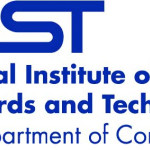- Settore: Technology
- Number of terms: 2742
- Number of blossaries: 0
- Company Profile:
The National Institute of Standards and Technology (NIST) — known between 1901 and 1988 as the National Bureau of Standards (NBS) — is a measurement standards laboratory and a non-regulatory agency of the United States Department of Commerce. The institute's official mission is to promote U.S. ...
A positive (negative) pattern element is a "partial wild card" presented as a subset of the alphabet Σ, with the symbols in the subset specifying which symbols of Σ are matched (mismatched) by the pattern element.
Industry:Computer science
A predetermined set of tapes used by an oracle Turing machine to make decisions otherwise not feasibled.
Industry:Computer science
A priority queue implemented with a binary tree having the following restrictions: <ul> <li>The key of a node is greater than keys of its children, i.e., it has the heap property. <li>If the right subtree is not empty, the left subtree is not empty. <li>If there are both left and right children, the left child's key is greater than the right child's key. </ul>
Industry:Computer science
A priority queue implemented with a variant of a binary tree. Every node has a count which is the distance to the nearest leaf. In addition to the heap property, leftist trees are kept so the right descendant of each node has the shorter distance to a leaf.
Industry:Computer science
A priority queue implemented with a variant of a binary tree. The root points to its children, as in a binary tree. Every other node points back to its parent and down to its leftmost (if it is a right child) or rightmost (if it is a left child) descendant leaf. The basic operation is merge or meld, which maintains the heap property. An element is inserted by merging it as a singleton. The root is removed by merging its right and left children. Merging is bottom-up, merging the leftmost edge of one with the rightmost edge of the other.
Industry:Computer science
A priority queue in which a key being inserted is never higher in priority than a previously deleted node.
Industry:Computer science
A priority queue which simultaneously keeps track of the maximum and minimum keys, and supports operations efficiently on either extreme (minimum or maximum).
Industry:Computer science
A probabilistic algorithm to quickly find points in a high dimensional space near a query point. Preprocessing: put every point in multiple hash tables. Each table has its own locality-sensitive hash function and uses buckets (or chaining) since many collisions are expected. The hash functions come from a family of functions. Finding: look up the query point in each hash table, and compute the distance from the query point of every point in the bucket.
Industry:Computer science
A probabilistic algorithm to quickly test membership in a large set using multiple hash functions into a single array of bits.
Industry:Computer science
A probabilistic method to convert a solution of a relaxed problem into an approximate solution to the original problem.
Industry:Computer science
